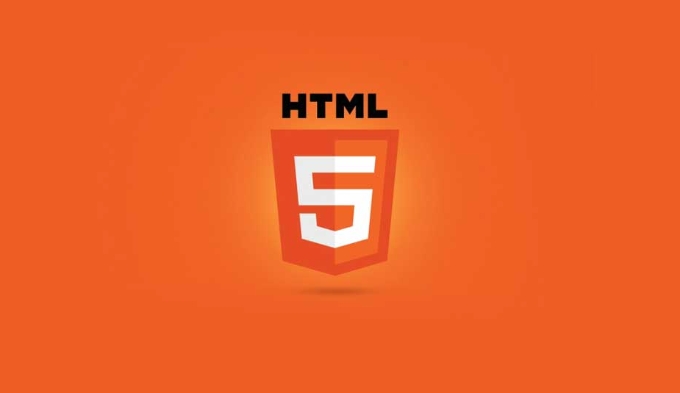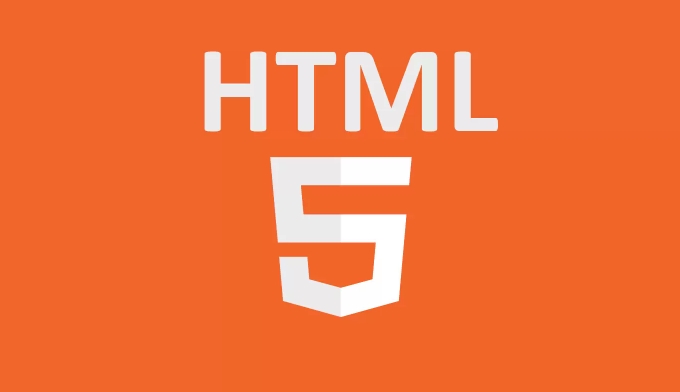What are the new input types available in HTML5 forms?
Jul 12, 2025 am 03:07 AMHTML5 introduced new input types that enhance form functionality and user experience by improving validation, UI, and mobile keyboard layouts. 1. email validates email addresses and supports multiple entries. 2. url checks for valid web addresses and triggers URL-optimized keyboards. 3. number allows numeric input with increment/decrement controls and range restrictions. 4. range provides a slider for selecting values within a defined range. 5. date, time, and related types offer built-in pickers for easier date and time entry. 6. search enhances search fields with features like auto-complete. These inputs streamline development and improve usability while gracefully degrading in older browsers, making them valuable when paired with server-side validation.

HTML5 introduced several new input types that enhance the functionality and user experience of web forms. These input types provide better validation, improved user interfaces on supporting browsers, and more appropriate keyboard layouts on mobile devices.

1. email – For Email Address Input
The email input type is used when you want the user to enter an email address. Browsers that support this input type automatically validate that the entered text matches a basic email format (e.g., user@example.com).
Example:

<input type="email" name="user_email" placeholder="you@example.com">
- You can use the
multipleattribute to allow multiple email addresses separated by commas. - It’s especially useful in sign-up or contact forms where valid email addresses are required.
2. url – For Web Address Input
The url input type expects a valid URL from the user. The browser checks whether the value starts with a valid protocol like http:// or https://.
Example:

<input type="url" name="website" placeholder="https://example.com">
- On mobile devices, this often triggers a keyboard optimized for entering URLs.
- Make sure to handle additional validation server-side since browsers only perform basic checks.
3. number – For Numeric Input
Use number when you want users to enter a number. This input type allows up/down arrows for incrementing and decrementing values and restricts input to numbers on many devices.
Example:
<input type="number" name="quantity" min="1" max="10" step="1">
You can control behavior using attributes:
minandmaxset limitsstepdefines how much the value increases or decreases
4. range – For Slider Inputs
The range input lets users pick a value from a range using a slider. It's great for settings like volume, brightness, or ratings.
Example:
<input type="range" name="volume" min="0" max="100" step="5">
- Users don’t always know the exact value they’re choosing, so it’s best used when precision isn't critical.
- Pair it with a visual indicator or label if showing the current value is important.
5. date, time, datetime-local, month, and week – For Date and Time Inputs
These inputs simplify date and time entry by offering built-in pickers:
date: selects a full date (YYYY-MM-DD)time: picks a time (HH:MM)datetime-local: combines date and time without timezonemonth: selects a month and yearweek: selects a week and year
Examples:
<input type="date" name="birthday"> <input type="time" name="meeting_time">
- Browser support varies, so always test across platforms.
- These inputs make data entry easier and reduce formatting errors.
6. search – For Search Field Input
Designed specifically for search boxes, search behaves similarly to text but may be styled differently or offer features like auto-complete and a clear button on some browsers.
Example:
<input type="search" name="query" placeholder="Search...">
- It improves usability in search forms by leveraging native UI enhancements.
- Works well in site navigation bars and app toolbars.
These input types help developers build smarter, more intuitive forms with less JavaScript. While not all browsers support every type equally, using them gracefully degrades to text in older environments. So, basically, they're worth using today — just back them up with server-side validation.
The above is the detailed content of What are the new input types available in HTML5 forms?. For more information, please follow other related articles on the PHP Chinese website!

Hot AI Tools

Undress AI Tool
Undress images for free

Undresser.AI Undress
AI-powered app for creating realistic nude photos

AI Clothes Remover
Online AI tool for removing clothes from photos.

Clothoff.io
AI clothes remover

Video Face Swap
Swap faces in any video effortlessly with our completely free AI face swap tool!

Hot Article

Hot Tools

Notepad++7.3.1
Easy-to-use and free code editor

SublimeText3 Chinese version
Chinese version, very easy to use

Zend Studio 13.0.1
Powerful PHP integrated development environment

Dreamweaver CS6
Visual web development tools

SublimeText3 Mac version
God-level code editing software (SublimeText3)

Hot Topics
 What Does H5 Refer To? Exploring the Context
Apr 12, 2025 am 12:03 AM
What Does H5 Refer To? Exploring the Context
Apr 12, 2025 am 12:03 AM
H5referstoHTML5,apivotaltechnologyinwebdevelopment.1)HTML5introducesnewelementsandAPIsforrich,dynamicwebapplications.2)Itsupportsmultimediawithoutplugins,enhancinguserexperienceacrossdevices.3)SemanticelementsimprovecontentstructureandSEO.4)H5'srespo
 HTML5 Interview Questions
Sep 04, 2024 pm 04:55 PM
HTML5 Interview Questions
Sep 04, 2024 pm 04:55 PM
HTML5 Interview Questions 1. What are HTML5 multimedia elements 2. What is canvas element 3. What is geolocation API 4. What are Web Workers
 Is h5 same as HTML5?
Apr 08, 2025 am 12:16 AM
Is h5 same as HTML5?
Apr 08, 2025 am 12:16 AM
"h5" and "HTML5" are the same in most cases, but they may have different meanings in certain specific scenarios. 1. "HTML5" is a W3C-defined standard that contains new tags and APIs. 2. "h5" is usually the abbreviation of HTML5, but in mobile development, it may refer to a framework based on HTML5. Understanding these differences helps to use these terms accurately in your project.
 Is H5 a Shorthand for HTML5? Exploring the Details
Apr 14, 2025 am 12:05 AM
Is H5 a Shorthand for HTML5? Exploring the Details
Apr 14, 2025 am 12:05 AM
H5 is not just the abbreviation of HTML5, it represents a wider modern web development technology ecosystem: 1. H5 includes HTML5, CSS3, JavaScript and related APIs and technologies; 2. It provides a richer, interactive and smooth user experience, and can run seamlessly on multiple devices; 3. Using the H5 technology stack, you can create responsive web pages and complex interactive functions.
 H5 and HTML5: Commonly Used Terms in Web Development
Apr 13, 2025 am 12:01 AM
H5 and HTML5: Commonly Used Terms in Web Development
Apr 13, 2025 am 12:01 AM
H5 and HTML5 refer to the same thing, namely HTML5. HTML5 is the fifth version of HTML, bringing new features such as semantic tags, multimedia support, canvas and graphics, offline storage and local storage, improving the expressiveness and interactivity of web pages.
 Understanding H5 Code: The Fundamentals of HTML5
Apr 17, 2025 am 12:08 AM
Understanding H5 Code: The Fundamentals of HTML5
Apr 17, 2025 am 12:08 AM
HTML5 is a key technology for building modern web pages, providing many new elements and features. 1. HTML5 introduces semantic elements such as, , etc., which enhances web page structure and SEO. 2. Support multimedia elements and embed media without plug-ins. 3. Forms enhance new input types and verification properties, simplifying the verification process. 4. Offer offline and local storage functions to improve web page performance and user experience.
 What does H5 mean?
Apr 04, 2025 am 12:10 AM
What does H5 mean?
Apr 04, 2025 am 12:10 AM
H5 is the abbreviation of HTML5 and is the fifth version of HTML. H5 enhances the structure and semantics of web pages, and introduces new features such as video, audio, canvas drawing and geolocation APIs, making web page development richer and more efficient.
 HTML5 and H5: Understanding the Common Usage
Apr 22, 2025 am 12:01 AM
HTML5 and H5: Understanding the Common Usage
Apr 22, 2025 am 12:01 AM
There is no difference between HTML5 and H5, which is the abbreviation of HTML5. 1.HTML5 is the fifth version of HTML, which enhances the multimedia and interactive functions of web pages. 2.H5 is often used to refer to HTML5-based mobile web pages or applications, and is suitable for various mobile devices.






